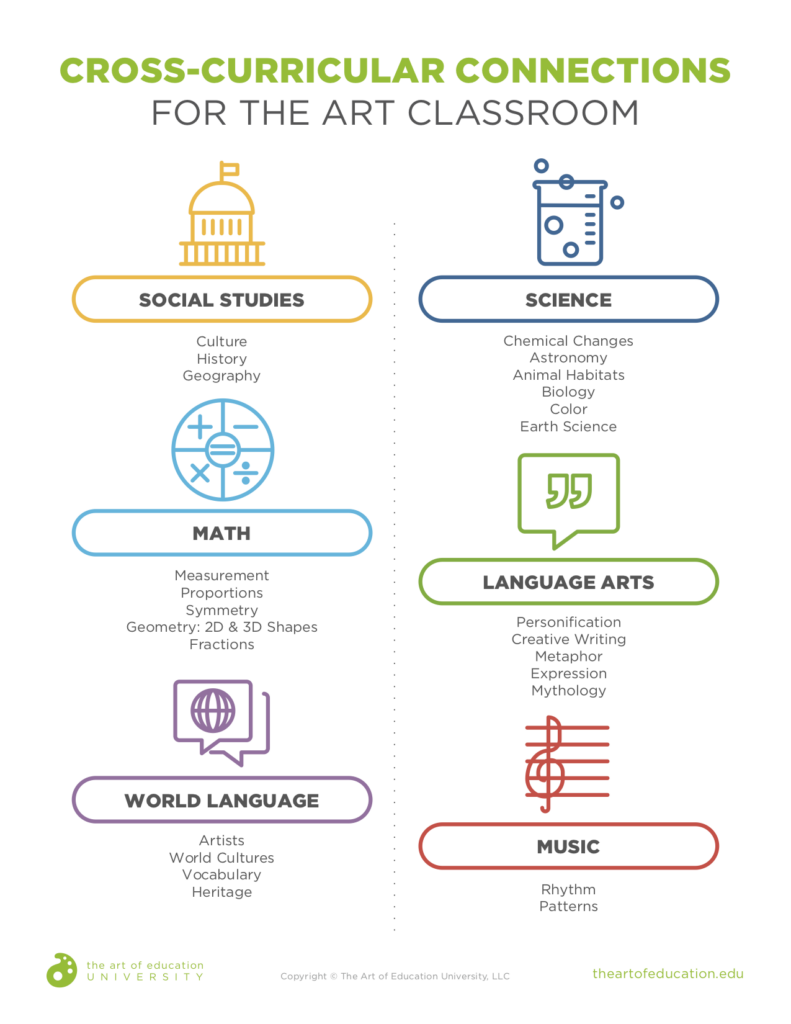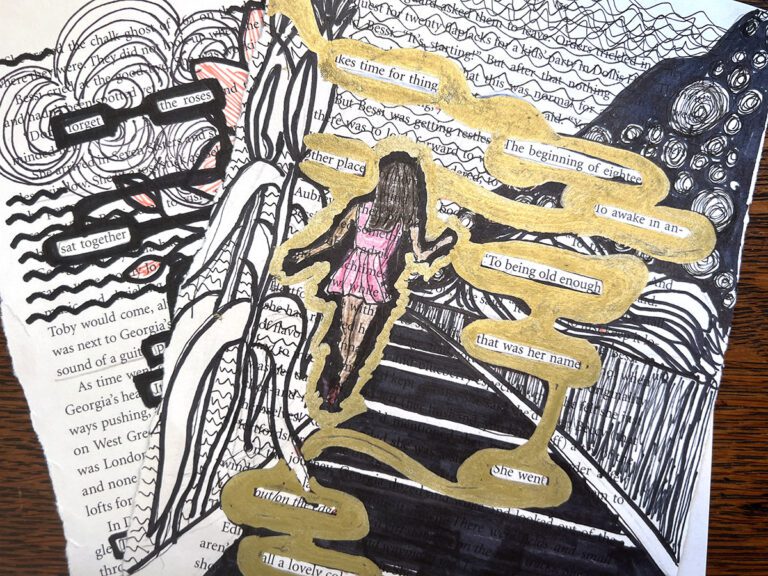The worst thing to hear from a student is, “When am I ever going to need to know this?” This question is like fingers on a chalkboard, it’s irritating. But, if you dig deep into your memories as a middle or high school student, you probably asked the same thing. You might have even told yourself in your high school algebra class that you’ll “never need to know this,” but, it turns out art teachers use a lot of math.
If we can show our students how the concepts they are learning will relate to the “real world,” our students might stop asking this question. An easy way to do this is to start making cross-curricular connections. Doing this doesn’t need to be complicated; here’s how you can get started.

5 Reasons Cross-Curricular Connections Are Important
What exactly is a cross-curricular connection? An excellent way to think of it is by combining a STEM (science, technology, engineering, or math) subject with a humanities subject like art. While, these connections can go beyond this, combining a STEM and humanities subject increases creativity and collaboration. When different subject matters come together, critical learning occurs. Here are just five ways it can benefit your students.
- Gives real-world meaning to learning.
- Allows students to problem-solve effectively.
- Increases student engagement.
- Allows for multi-disciplinary learning to occur.
- Teaches diverse knowledge and skill.
Infusing Cross-Curricular Connections Does Not Need to be Difficult
When it comes to lesson planning, we tend to overthink it. Have you ever had a lesson where you’ve spent so much time trying to make a connection that in the execution of the lesson it just gets lost? Lesson planning to incorporate cross-curricular areas doesn’t need to be this way. It should be easy. One of the wonderful things about the art subject matter is that it already connects to so many different subject areas!
If you’re looking to connect a lesson to a specific subject area, use the list below to generate connection ideas.
Download Cross-Curricular Connections For The Art Classroom
How to Make Connections Meaningful
If you want these connections to impact your students, it works best if you can connect to what they are currently learning in their other courses. This means you must be willing to collaborate and discuss with your colleagues. This doesn’t mean you need to spend hours planning with them. Simply ask them the overarching topics they are teaching. If students are learning about the Holocaust in language arts or history class, that’s all you need to know. From here, you can take your artistic liberties to show them this same concept through the lens of an artist. Will you always be able to line up on the same day or week you students are learning about a particular topic? No. But, even if you learn about a topic a month or two later, it will still create lasting learning.
An Example of Easily Implementing Cross-Curricular Connections with Observational Drawing

Okay, if we want this to be easy–let’s show you how simple it can be. We are going to tackle the topic of observational drawing. Since this is a concept taught at all levels, it can be adapted to fit the grade level you teach.
- Math Connection: Look at the objects you are drawing, break them down into geometric shapes to find the simple make-up of the objects.
- Literacy Connection: Use personification by brining your observational drawing to life.
- Science Connection: Observe, then document through drawing how man-made objects differ from objects in nature.
- Social Studies Connection: Observe how style and clothing have changed over time. Document this in your observational drawing.
- World Language Connection: Compare and contrast two artists from different parts of the world. Document how their drawings differ and are alike.
See, it’s easy! You don’t need to spend a lot of time planning for cross-curricular connections. Remember to put yourself in your students’ shoes. If it’s an idea that seems like a stretch or doesn’t make sense, don’t force it. The goal when making these connections is to help students learn about a topic in a new and more profound way. The art room is just the place to make this happen!
What do you find challenging about making cross-curricular connections?
What subject do you find easiest to connect to your art curriculum?
Magazine articles and podcasts are opinions of professional education contributors and do not necessarily represent the position of the Art of Education University (AOEU) or its academic offerings. Contributors use terms in the way they are most often talked about in the scope of their educational experiences.






